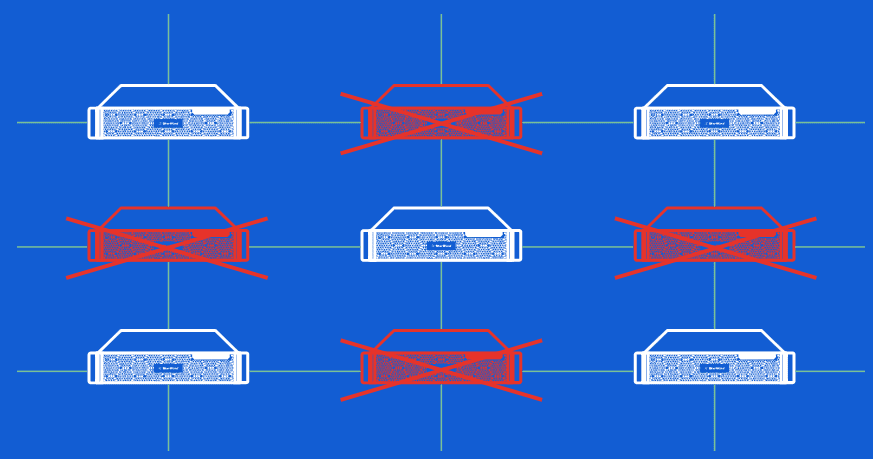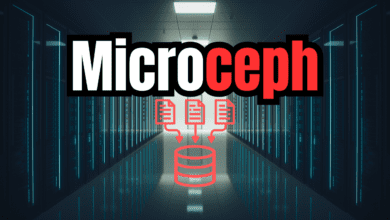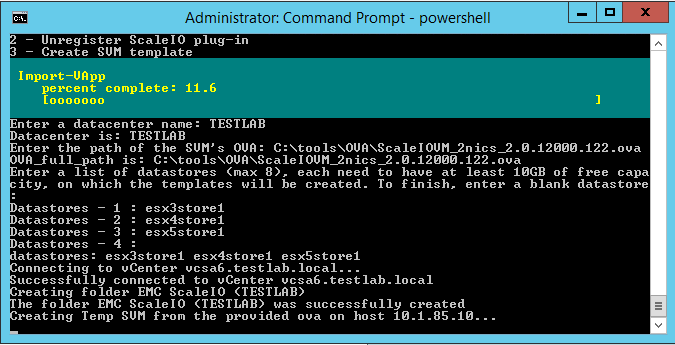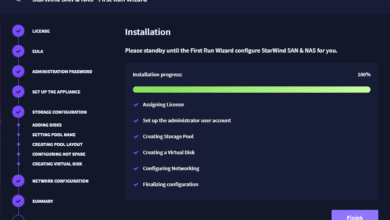New StarWind VSAN for vSphere Download
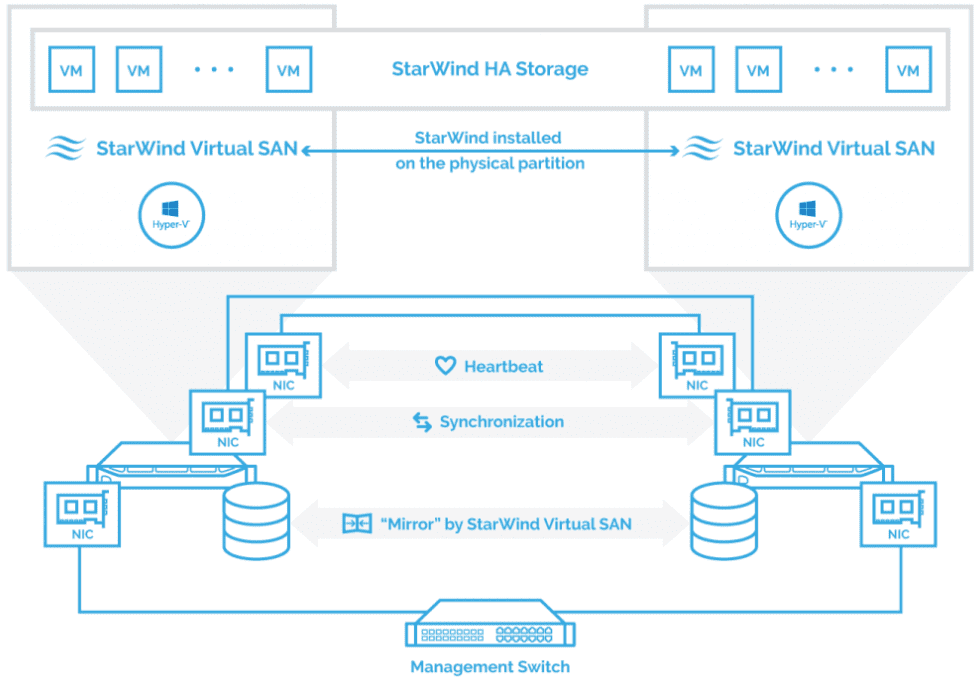
Most enterprise organizations today are making use of software-defined storage technologies. These bring many capabilities to the table that go beyond what traditional storage can do. StarWind VSAN solutions continue to become more powerful and fully-featured with each release. StarWind recently released a new version of its StarWind VSAN for vSphere product, adding new features. Let’s take a look at the new StarWind VSAN for vSphere download and see what new changes and additions have been made to the core product with this release.
StarWind Virtual SAN (VSAN) Overview
Before taking a look at the new StarWind VSAN for vSphere features and capabilities in the newest release, let’s get an overview of the StarWind VSAN solution. What is it? What features does it contain?
StarWind’s Virtual SAN (VSAN) provides a powerful solution for software-defined storage and eliminates the need for physical Storage Area Network (SAN) devices connected to your physical servers. Instead, using StarWind VSAN, you can mirror internal hard disks and flash between your hypervisor hosts to create a “logical” shared storage between your servers, so the storage is seen similarly as simple shared storage between them.
One of the many features and benefits that StarWind provides that it is hypervisor agnostic. It can be used with Microsoft Hyper-V, VMware vSphere, Linux KVM, or Xen. Additionally, there is no such thing as a hardware compatibility list (HCL) with StarWind VSAN. You can essentially use any commercial off-the-shelf (COTS) hardware to create an inexpensive, durable, and performant software-defined storage solution.
Another unique feature of the StarWind VSAN solution is that it is a truly two-node approach. With most other software-defined storage solutions, the two-node configurations generally require a “witness” component that provides a quorum between the two storage nodes. However, with StarWind VSAN, this witness component is not required.
With other vendors, the requirement outside of the minimum two-node configurations requires additional expenditures that offsets the solution’s value. With the truly two-node approach of StarWind VSAN, organizations do not have the extra expenditures required with other approaches and can quickly realize the value of the solution. Since it is not tied to a specific hypervisor technology, you are alleviating vendor lock-in to that particular product and technology.
StarWind VSAN provides an extremely performant iSCSI stack implementation that is one of the highest performing solutions on the market. This allows achieving maximum performance with less hardware needed. Also, it supports multiple protocols such as iSCSI, iSER (iSCSI Extension for RDMA), NFS, SMB3, and NVMe-oF (NVMe over Fabrics).
StarWind VSAN provides the benefits of local storage such as the high-performance achieved as well as low-latency. This results in many benefits compared to hardware-based storage. These include:
- Hypervisor reads from local storage only. High-speed synchronization network links are used to replicate writes to the partner hypervisor nodes.
- The cache is local, so the performance gain is much better compared to the cache sitting behind a slow network.
- Hypervisor nodes do not interfere when accessing the LUN, which increases performance and eliminates unnecessary iSCSI lock overhead.
True Two-node Heartbeat Strategy
How does StarWind avoid the challenges that are associated with only a two-node software-defined storage configuration and the subsequent split-brain scenario? They do this with the Heartbeat Failover Strategy. This is explained in the StarWind KB this way:
The Heartbeat failover strategy allows avoiding the “split-brain” scenario when the HA cluster nodes are unable to synchronize but continue to accept write commands from the initiators independently. It can occur when all synchronization and heartbeat channels disconnect simultaneously, and the partner nodes do not respond to the node’s requests. As a result, StarWind service assumes the partner nodes to be offline and continues operations on a single-node mode using data written to it.
If at least one heartbeat link is online, StarWind services can communicate with each other via this link. The device with the lowest priority will be marked as not synchronized and get subsequently blocked for the further read and write operations until the synchronization channel resumption. At the same time, the partner device on the synchronized node flushes data from the cache to the disk to preserve data integrity in case the node goes down unexpectedly. It is recommended to assign more independent heartbeat channels during the replica creation to improve system stability and avoid the “split-brain” issue. With the heartbeat failover strategy, the storage cluster will continue working with only one StarWind node available.
New StarWind VSAN for vSphere Download
As mentioned, the technology continues to get better with each new release. This month, StarWind has released a new version of StarWind VSAN for vSphere. What is contained in this release of the product?
- New Synchronous Replication Features
- Management Console Improvements
- StarWindX PowerShell Module
- Bug fixes
New Synchronous Replication Features
What’s new with synchronous replication? These are mainly smaller improvements, however, they are worth noting:
- An additional option for SMB share as a witness resource for devices with synchronous replication and node majority failover strategy
- Fixed processing of persistent reservations for synchronous replication
- Fixed partner state updating for restoration after split-brain
Management Console
- A system crash was resolved when records with incorrect string format
- Updated email notification settings dialog. New verification options have been added
StarWindX PowerShell module
- New features have been added with the StarWind PowerShell module that allows creating HA devices with Node Majority configuration.
- Fixed processing of the ALUA parameter for HA device creation cmdlets
Wrapping Up
StarWind VSAN is a very robust and unique software-defined storage offering on the market. It allows breaking out of the vendor lock-in with other technologies to have a solution that literally works across many different hypervisors. The true two-node configuration that uses heartbeating allows eliminating unnecessary infrastructure to avoid split-brain. You can have a single StarWind node up and running and still have access to your data. The New StarWind VSAN for vSphere Download released this month, improves on the features offered. Although minor fixes and improvements, it shows the solution keeps getting better and more fully-featured.
Be sure to check out more about StarWind VSAN here.


